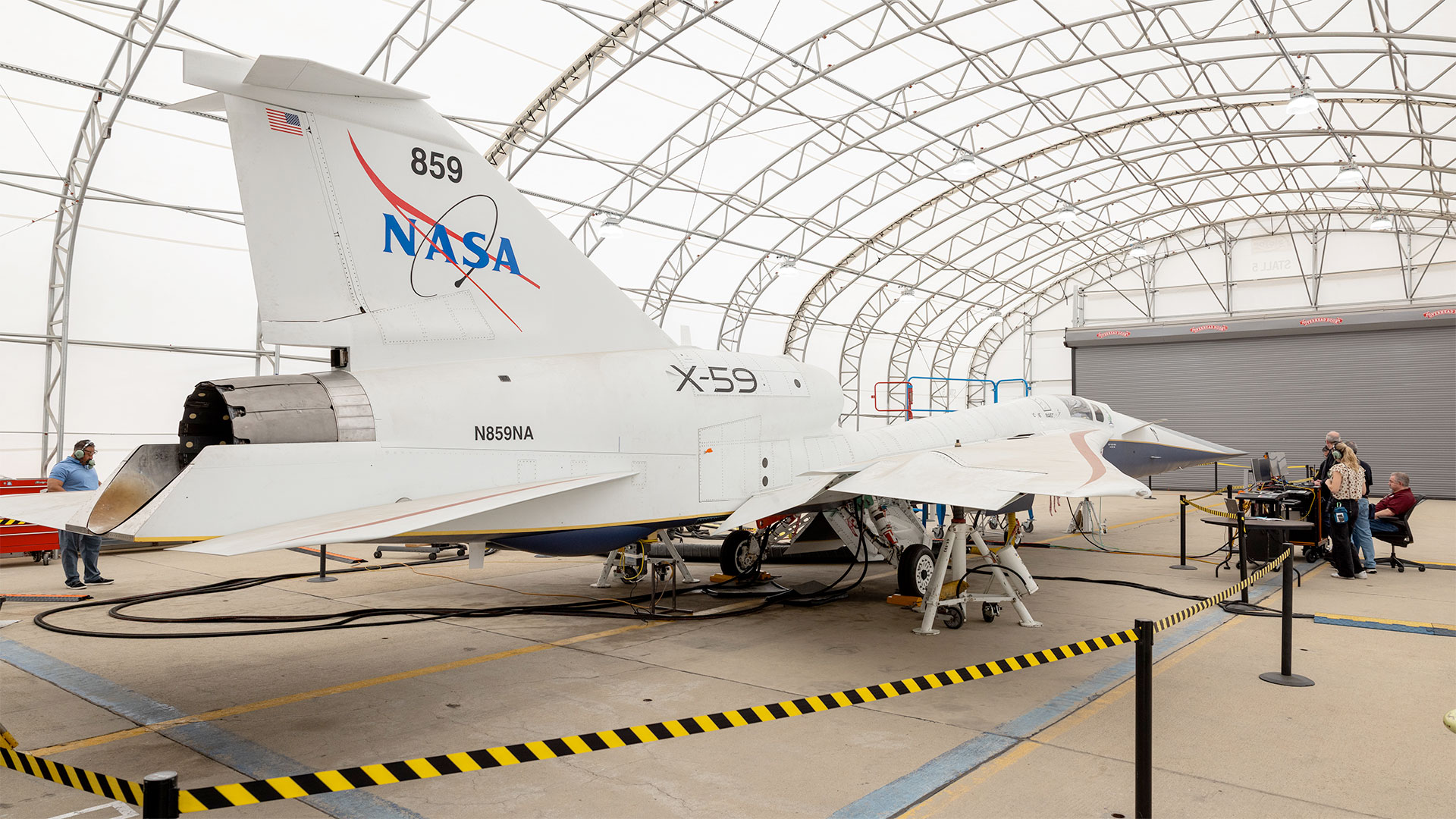
What is it?
NASA's X-59 quiet supersonic research aircraft was developed by Lockheed Martin Skunk Works for the space agency's Low-Boom Flight Demonstrator project. Through the use of a long, narrow airframe and canards, the X-59 is able to reduce the noise that reaches the ground from sonic booms generated as the aircraft crosses the speed of sound.
The X-59's cockpit, ejection seat and canopy come from a T-38 "Falon" training jet and the landing gear from an F-16 "Falcon" fighter jet. The research aircraft (X-plane) is 100 feet long (30.4 meters) and has a 29.5-foot (9-meter) wingspan.
Powered by a General Electric F-414 engine, the X-59 is projected to reach a maximum speed of Mach 1.5 or 990 mph (1,590 km/h), and cruise at Mach 1.42 or 940 mph (1,510 km/h) at 55,000 feet (16,800 meters).
Where is it?
Though the X-59 thought it was high above the ground during the simulation tests, it was actually parked at Lockheed Martin's Skunk Works facility in Palmdale, California.
Why is it amazing?
"The idea behind these tests is to command the airplane's subsystems and flight computer to function as if it is flying," said Yohan Lin, the X-59's lead avionics engineer at NASA's Armstrong Flight Research Center in Edwards, California, in an interview with NASA.
During the testing, engineers turned on most of the aircraft's systems but left the engine off. The flight computer still had control over the X-59's control surfaces, responding to inputs that simulated changes in altitude, speed, temperature or the health of its various systems.
"These were simple maneuvers, nothing too crazy," Lin said. "We would then inject failures into the airplane to see how it would respond. Would the system compensate for the failure? Was the pilot able to recover?"
Historically, this work is known as "iron bird" testing, named for a simple metal frame on which representations of the aircraft's subsystems are installed, connected and checked out. Since the X-59 is a one-of-a-kind, officials decided it was better and less expensive to use the aircraft itself.
As such, the series of exercises was dubbed "aluminum bird" testing, since that's the primary metal comprising the X-59.
Want to learn more?
You can read about the X-59's earlier tests, including a "cruise control" trial and electromagnetic interference testing on the ground. You can also see photos from its afterburner tests.
.png)
 German (DE)
German (DE)  English (US)
English (US)  Spanish (ES)
Spanish (ES)  French (FR)
French (FR)  Hindi (IN)
Hindi (IN)  Italian (IT)
Italian (IT)  Russian (RU)
Russian (RU) 








Comments